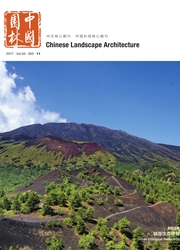

 中文摘要:
中文摘要:
通过物质空间形态反映社会愿望和集体诉求是城市规划的工作特征,将社会、经济、文化问题分解和转化为具体的城市空间现象是城市设计工作的基础。作为空间发展管制工具的类型之一,中国的城市设计如今在基本概念、实践工作框架与思想范式等方面存在诸多局限,更面临着城市化进程的复杂性、生态环境恶化、地域性丧失,以及实现可持续发展目标等众多新的挑战。在这一过程中,景观概念固有的综合性、整体性与可视性,促使其可为可持续的城市设计提供综合媒介与创新途径,景观特征的概念则更进一步为可持续性的落地提供了可操作的工具与方法。
 英文摘要:
英文摘要:
Reflecting the desires of society and aspiration of community through the urban physical spatial form is the characteristics of urban planning system,and translating social,economic,and cultural problems into concrete urban space is the foundation of urban design.Now in China urban design still has many limitations in basic concept,practice framework,and theoretic paradigm,especially when faced with many new challenges,such as sophisticated urbanization process,deterioration of ecological environment,loss of local sense,and sustainability.In this process,landscape can provide new medium and method for sustainable urban design because of its inherent nature of holistic,integral,and visible,to promote collaboration and innovation,and the concept of landscape character can further provide operational tool and method.
 同期刊论文项目
同期刊论文项目
 同项目期刊论文
同项目期刊论文
 期刊信息
期刊信息
